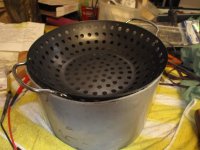I will pull them next time and put in a container, if more joint them then will see if they wear down enough to keep it from happening.
Seems pretty stupid to have to pick them out when you can make them short enough to fit most if not all common cases. sigh - do I have to go ceramic?
Seems pretty stupid to have to pick them out when you can make them short enough to fit most if not all common cases. sigh - do I have to go ceramic?

